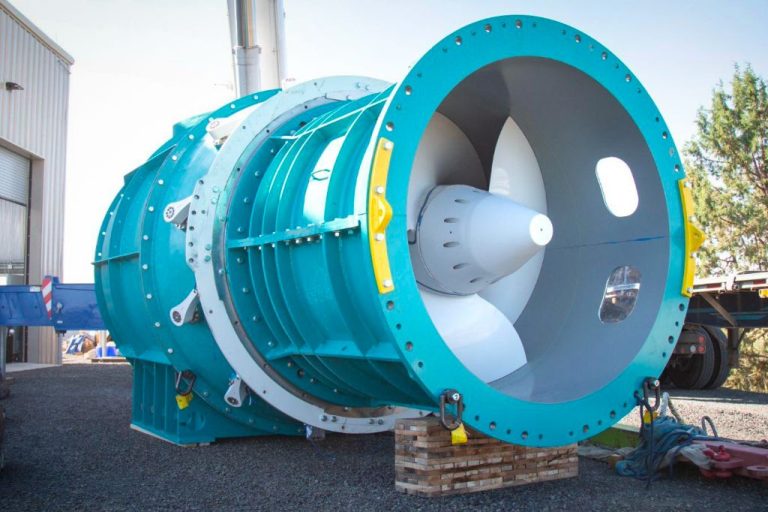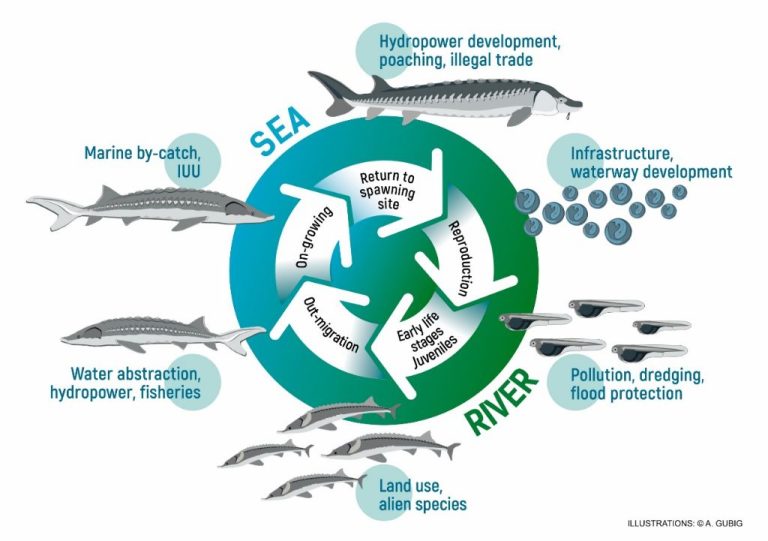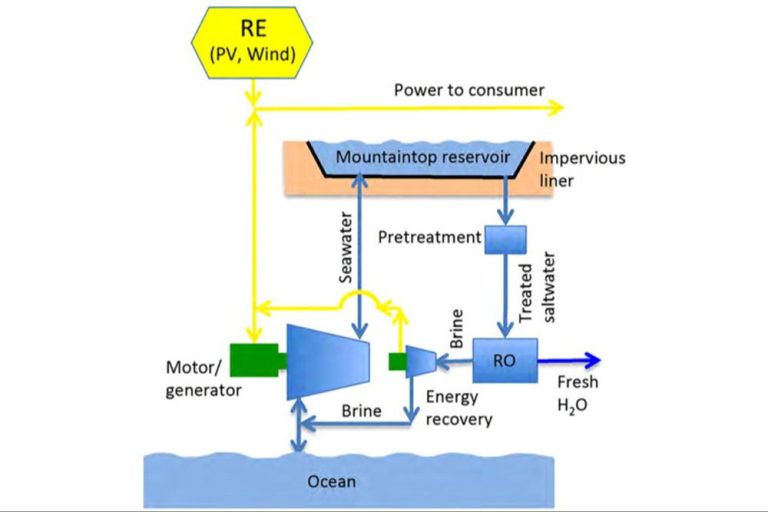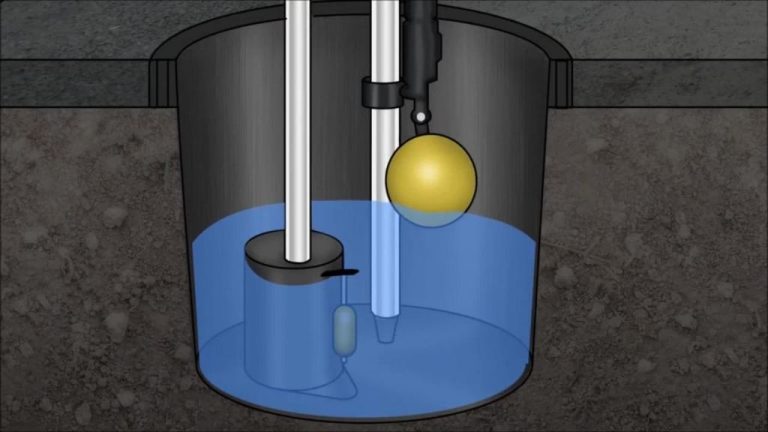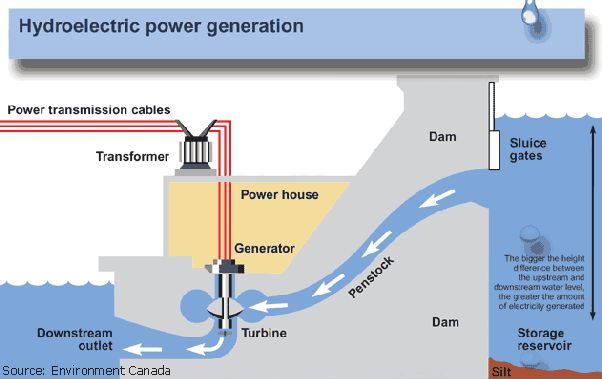How Is Water Power Renewable?
Water power refers to the renewable energy harnessed from water sources such as rivers, tides, waves, and gradients in salt concentration. As nations seek cleaner, sustainable energy alternatives to fossil fuels, water power has emerged as an important renewable resource. Water resources are constantly replenished through Earth’s natural water cycle, making water power an indefinitely renewable source of energy.
Developing renewable energy sources like water power is a crucial strategy for reducing greenhouse gas emissions and mitigating human-caused climate change. Water power offers a clean, emissions-free alternative to coal and natural gas. The renewable nature of water power also promotes energy independence and security for nations that develop this domestic resource.
Hydropower
Hydropower or hydroelectric power refers to the use of flowing water to generate electricity. It relies on the water cycle, where water evaporates, forms clouds, precipitates, and flows down to the ocean through rivers and streams. The energy of the flowing water can be harnessed and converted into electricity through hydropower plants.
There are mainly two types of hydropower plants:
- Dam-based: These involve constructing dams across rivers to create reservoirs. The water is released through turbines in a controlled manner to generate electricity.
- Run-of-river: These utilize the natural flow of rivers and streams to turn turbines and do not require dams or reservoirs.
Some key benefits of hydropower include:
- Renewable and sustainable – The water cycle replenishes the water used to generate electricity
- Clean energy – It does not produce air pollution or greenhouse gases
- Energy storage – Hydropower plants with reservoirs can store energy and provide electricity on demand
- Flood control – Dams associated with hydropower can help control flooding
Tidal Power
Tidal power utilizes the natural ebb and flow of ocean tides to generate electricity. Tidal generators, which resemble underwater windmills, are placed in areas with particularly strong tidal currents. As the tide moves in and out, it spins the generator’s rotors to produce electricity.
Tidal energy has some advantages compared to other renewable sources. Tides are predictable far in advance, allowing generators to be scheduled around peak flow times. Tidal power facilities also have a low visual impact since most equipment sits underwater. Additionally, tidal energy does not require dams or impoundments, reducing environmental disruption.
However, tidal power also has some downsides. Only a dozen or so sites worldwide have tidal ranges and flows that make them economically viable for commercial power generation. Tidal facilities are also expensive to build and must withstand harsh marine environments. And while tides are predictable, they still ebb and flow, meaning output is intermittent rather than constant.
Overall, tidal power is a promising carbon-free energy source, but its availability is geographically limited. With more technological improvements, tidal energy could play a niche role in some regions with the right tidal conditions.
Wave Power
Wave power is a form of renewable energy that harnesses the kinetic energy of ocean waves and converts it into electricity. Wave energy technologies work by using the up-and-down or back-and-forth motion of waves to drive electromechanical or hydraulic devices that generate electricity.
There are several types of wave energy converters, but they all consist of floats, paddles, or other devices that move up and down as waves pass. This motion drives electromechanical or hydraulic power generators. The electricity generated is then fed through subsea cables to shore and integrated into the electrical grid.
Some of the advantages of wave power include:
- Renewable – Waves are constantly in motion and provide a predictable source of energy.
- Low carbon – Wave energy doesn’t produce greenhouse gas emissions.
- Abundant – There is a massive amount of energy in ocean waves that can be tapped.
- Environmentally friendly – Wave energy has less environmental impact than fossil fuels.
- Reliable – Waves occur both day and night, providing a stable electricity supply.
While wave power technology is still under development, it holds great promise as a substantial renewable energy source for coastal communities and nations. With the right investments and innovations, wave power could play a major role in a clean energy future.
Osmotic Power
Osmotic power, also known as salinity gradient power, utilizes the energy captured from the difference in salt concentration between seawater and freshwater. When freshwater and seawater meet on opposite sides of a semi-permeable membrane, the freshwater will pass through to equalize the salt concentration. This process creates pressure that can be converted into electricity via turbines. Osmotic power is considered renewable since it relies on naturally occurring salinity gradients where freshwater flows into the sea, such as at river mouths or estuaries.
The osmotic pressure difference between seawater and freshwater can provide a significant amount of energy potential. According to studies, the global potential of osmotic power is up to 1670 TWh per year, or about 13% of the world’s electricity consumption. The key to utilizing this energy potential is developing efficient membranes that allow freshwater to pass through while blocking salt ions. Current membrane technology can convert only about 30% of the available energy, but improvements in membrane materials and system design could increase efficiency and make osmotic power commercially viable. Overall, osmotic power represents a promising renewable energy source that could contribute to the world’s future clean energy mix.
Hydrokinetic Power
Hydrokinetic power is a form of hydropower that harnesses the kinetic energy of flowing water to generate electricity. Unlike traditional hydropower dams that require impoundments or dams to create height differentials, hydrokinetic technologies can generate power directly from the natural flow of water in rivers, tidal estuaries, and ocean currents.
Some common types of hydrokinetic technologies include:
- Tidal turbines – Similar to wind turbines, these are submerged in tidal zones and rotate from the force of tidal currents.
- Wave energy converters – Floating or submerged devices that absorb wave energy and convert it into electricity.
- In-stream turbines – Turbines placed directly into the flow of rivers and capture the kinetic energy of the moving water.
Hydrokinetic power has several key benefits:
- It is renewable – The kinetic energy of moving water is constantly replenished through tidal cycles and the hydrologic cycle.
- Predictable – The energy output can be forecast based on tide charts and seasonal river flows.
- Low environmental impact – Hydrokinetic devices do not require dams or water impoundment, reducing disruption to wildlife.
- Scalable – Systems can be small and localized or large-scale to provide utility-level power.
Overall, hydrokinetic technologies allow for renewable electricity generation from rivers and oceans with minimal environmental disturbance compared to conventional hydropower. The technologies are still emerging but hold significant potential as a sustainable energy source.
Pumped Storage
Pumped storage hydropower is a type of hydropower that utilizes pumped storage facilities to store energy and generate electricity. This involves pumping water from a lower reservoir to an upper reservoir when electricity demand is low. The water is then released from the upper reservoir to the lower reservoir to generate electricity via turbine generators when demand is high.
Pumped storage provides a way to effectively store large amounts of energy. Pumping water uphill converts electrical energy into potential gravitational energy. Then, when electricity is needed, the water flows downhill through turbines, converting gravitational potential energy into electrical energy. The height difference between the upper and lower reservoirs creates pressure that allows power generation.
Pumped storage hydropower is considered renewable since it relies on the water storage and movement cycle. No fuel is consumed in the process. The upper reservoir acts as a type of battery, charging when electricity prices are low and discharging when electricity demand and prices are high. This allows power producers to balance and stabilize the electrical grid efficiently.
Some key benefits of pumped storage include energy storage capacity, grid reliability, cost-effectiveness, and quick responsiveness to electricity demands. Overall, pumped storage provides renewable hydroelectric power on demand from previously stored water.
Environmental Impact
While water power is renewable, there are some environmental impacts to consider.
Dams built for hydropower can obstruct fish migration routes and change natural water temperatures and flow patterns, impacting wildlife habitats. However, technology like fish ladders can allow fish to bypass dams.
Tidal power barrages can prevent tidal flushing, altering salinity levels and affecting coastal wetlands. Careful site selection is needed.
Wave power devices may disrupt marine habitats. Anchoring to the seabed can disturb sediment and underwater noise may affect marine mammals.
For hydrokinetic power like river/ocean currents, rotating turbine blades pose collision risks for fish and marine mammals if improperly sited.
With careful planning and mitigation like fish-friendly turbines, water power’s environmental effects can be minimized while harnessing its renewable strengths.
Cost Comparison
When comparing the costs of water power to other renewable energy sources like wind and solar, hydropower is often one of the most affordable options. The main costs for hydropower plants are the initial construction and infrastructure, which can require substantial upfront investment. However, once built, the operating costs are relatively low compared to alternatives.
The levelized cost of energy (LCOE) for hydropower ranges from $0.02 to $0.19 per kilowatt-hour. This is competitive with or lower than solar photovoltaics ($0.036 to $0.319/kWh) and onshore wind ($0.039 to $0.084/kWh). Wave and tidal energy can have higher LCOEs between $0.13 and $0.87/kWh since the technologies are not yet mature.
Hydropower facilities also benefit from long equipment lifetimes of 50-100 years. This allows time to recoup the initial construction costs through decades of operation. In comparison, wind and solar have lifetimes around 20-30 years. Overall, hydropower’s low and stable operating costs combined with long asset life make it a very affordable renewable electricity source over the long run.
Conclusion
In summary, water power is considered renewable because it harnesses the natural movements and flow of water, which are constantly replenished through the hydrologic cycle. The main types of water power include hydropower from dams, tidal power from the tides, wave power from ocean waves, osmotic power from salinity gradients, and hydrokinetic power from river and ocean currents. While water power does have some environmental impacts on fish migration and downstream ecosystems, it offers a clean, renewable alternative to fossil fuels with lower greenhouse gas emissions. The costs of water power are coming down as technology improves, making it competitive with conventional power sources. With further innovation and responsible implementation, water power has a bright renewable future and will play a key role in the world’s transition to a more sustainable energy system.

